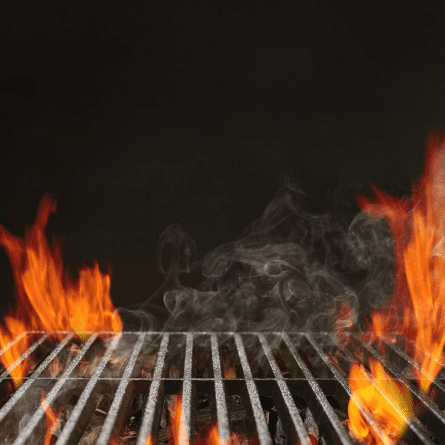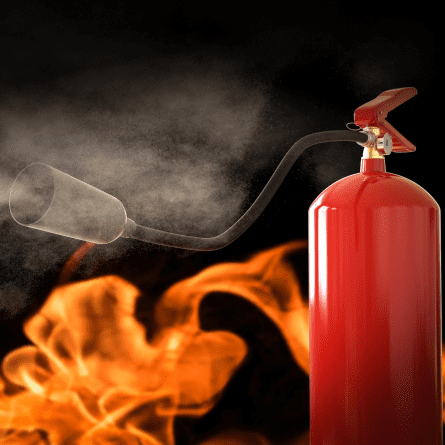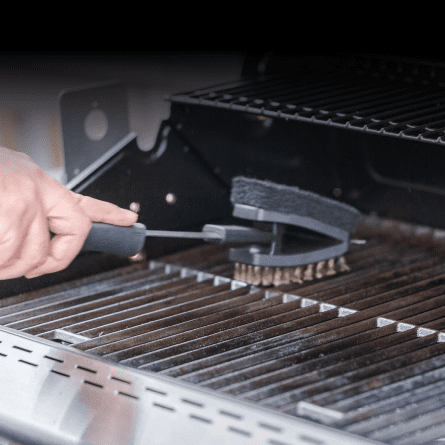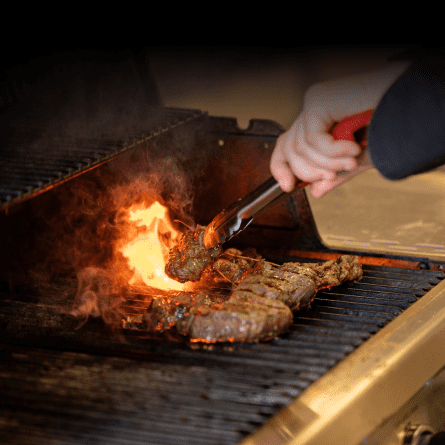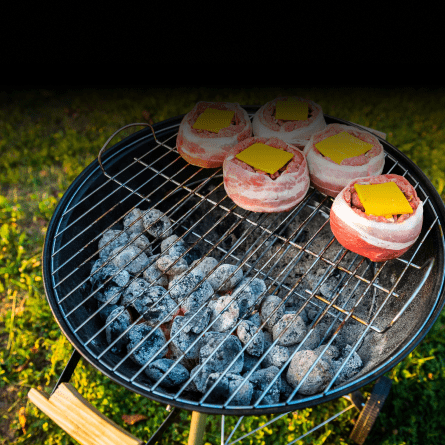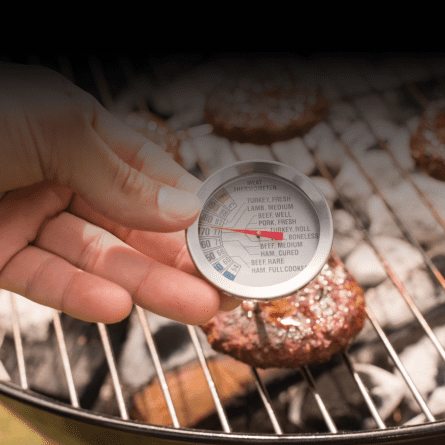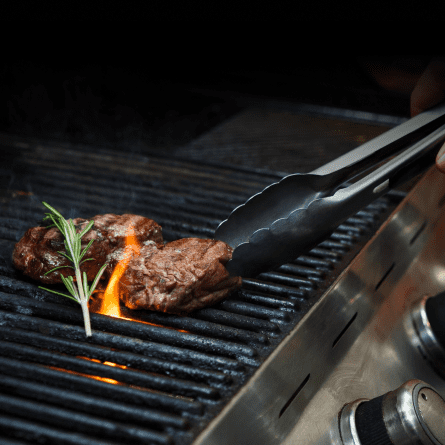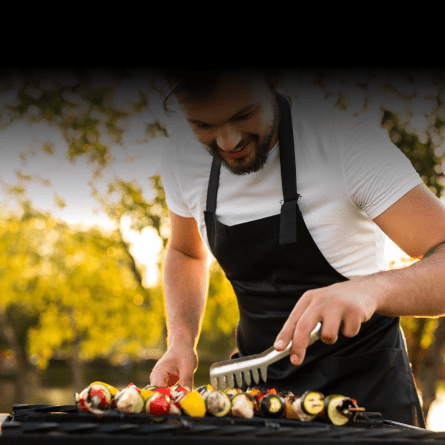
Direct Vs Indirect
Heat for Grilling
What’s the Difference?
Indirect Heat
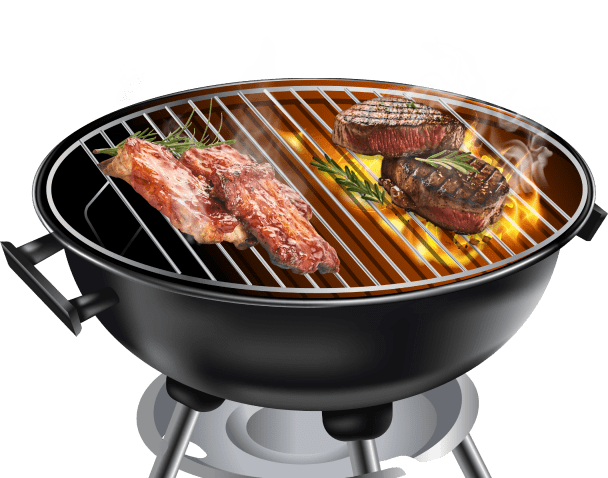
Direct Heat

There’s nothing more satisfying than hosting a get-together and expertly grilling a banquet for your guests.
It’s even more impressive if you serve up a variety of foods, cooked to varying levels of doneness. To do this and really show your culinary prowess, you need to understand the difference between direct and indirect heat.
Direct heat, as the name suggests, is when food is placed directly over the heat as you grill.
Indirect heat, on the other hand, involves placing your food to the side or away from the heat source
This subtle distinction in positioning can make all the difference to your end results.
The graphics below illustrate the two different types of heat
The type of heat you use doesn’t just change how quickly your food cooks, it can actually alter how your food tastes.
Once you master the difference between the two heat types, you’ll find yourself experiencing new flavors and a whole new layer of depth to your food.
In this article, we’ll explore the ins and outs of direct versus indirect grilling, and really get to grips with each type of heat. You’ll learn how to apply different heat for different types of grill, what foods go with each heat type, and how to be safe when grilling. Let’s get started!
Direct Heat Grilling
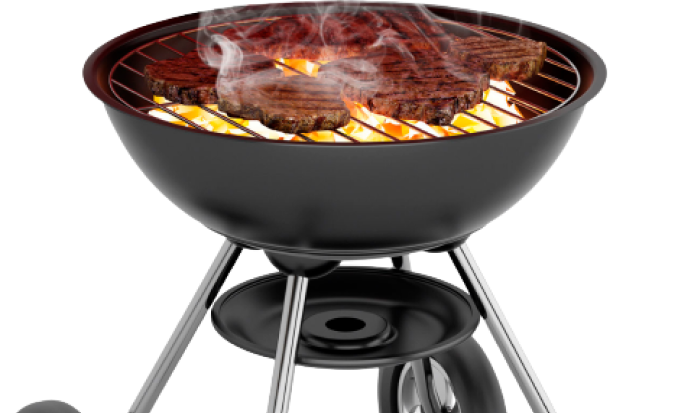
Direct heat grilling is the easiest, most common form of grilling. It’s the method almost everyone uses without necessarily realizing it even had a name!
Direct heat involves placing your food directly over the heat source so it cooks quickly and efficiently. All high-quality grills accommodate for this type of food preparation.

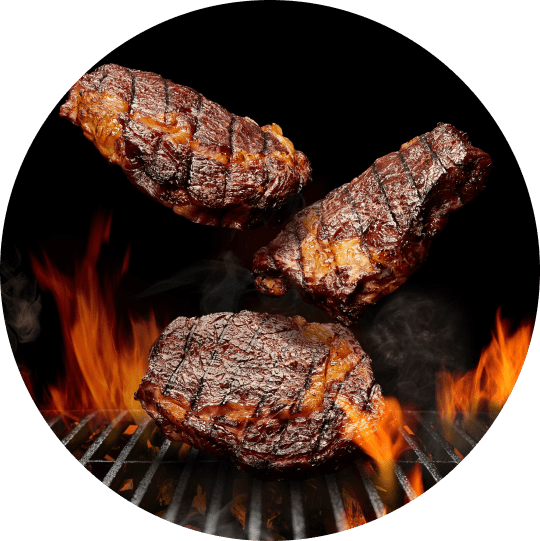
Thinner foods are best cooked using direct heat, since the higher temperatures involved in the process tend to char thicker foods without cooking the whole way through.
Food grilled using direct heat typically has a beautifully seared and crispy exterior, while the interior can be cooked to the desired level of doneness.
Want to really impress your guests? Direct heat is ideal for achieving those iconic grill lines that all the top restaurants use. It’s also incredibly adept at getting that lovely smoky flavor associated with high-quality grilling, since the food is placed directly onto the grill grate over the heat source.
Best Practices for Direct Heat Grilling
Grilling isn’t simply about setting the food down and waiting, oh no. It’s actually a highly delicate art form that’s relatively easy to get wrong.
You’ll need to learn some best practices before you start grilling, especially if you plan on using direct heat. If you just fire up your grill and whack the food on, chances are you’ll end up burning it or, worse, undercooking it.
While it’s important to learn about the food preparation process, it’s also crucial that you understand how to properly take care of your grill.
This ensures that when you apply direct heat to your food, it doesn’t damage your grill or cook the food in a way that messes up the insides of your beloved barbecue.
Below, you’ll find some tips for best practices when using direct heat for grilling. Most of them are simply common sense, but you’ll be surprised how easy it is to forget them when you’re wrapped up in the heat of the moment (pardon the pun)!
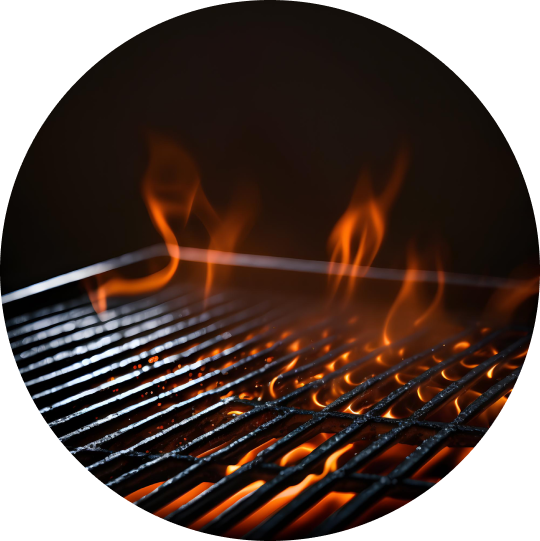
Make sure you consider the following tips before grilling with direct heat:
Best Foods for Direct Heat Grilling
So, now you know how direct heat grilling works, what foods are best cooked with it? In short, you can cook almost anything with direct heat, provided it’s not too thick. Since direct heat requires such high temperatures, bulky joints of meat don’t tend to cook evenly throughout. This could lead to an undercooked final product, so best to stick to thinner cuts.
With a direct heat BBQ, you can cook a variety of meat, fish, and vegetables well to create a flavorful grilled platter. Cooking with direct heat produces a lovely crispy finish on your food, which can taste wonderful with certain meats and veg.
Take a look at the list of foods that are ideal for grilling with direct heat
Steaks
You can use direct heat to grill steaks quickly and easily, provided they’re thin cuts. Flank steak, skirt steak, and ribeye steak are all ideal for direct heat grilling.
Using this type of heat creates a lovely, seared exterior and keeps the inside juicy and tender.


Burgers
Burgers are one of the best food items to grill with direct heat.
The high heat cooks them quickly and they take in that gorgeously smoky flavor from the grill. Maintain high temperatures throughout and flip them over frequently to avoid burning or sticking.
Chicken breasts
Boneless, skinless chicken breasts are ideal for direct heat, since they’re often relatively thin.
If you pound or butterfly the breasts before cooking, you can get them to the perfect shape for grilling and ensure even cooking throughout the meat. Direct heat grilling gives chicken breasts a nice charred exterior, with lovely signature grill lines to add to the experience.
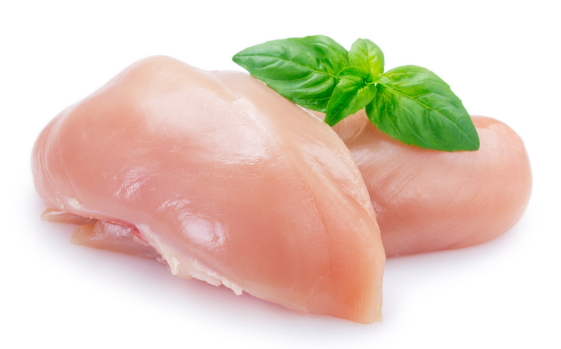

Vegetables
All the classic bbq veg should be grilled using direct heat to ensure a seared and crispy exterior.
Zucchinis, eggplants, bell peppers, and asparagus are the best vegetables to cook using direct heat, as they take on a smoky taste the complements their flavors.
Shrimp and fish fillets
These seafoods are delicate, meaning they benefit from fast and thorough cooking.
Ensure your grates are oiled before grilling and keep a close eye on them to avoid overcooking.

Indirect Heat Grilling
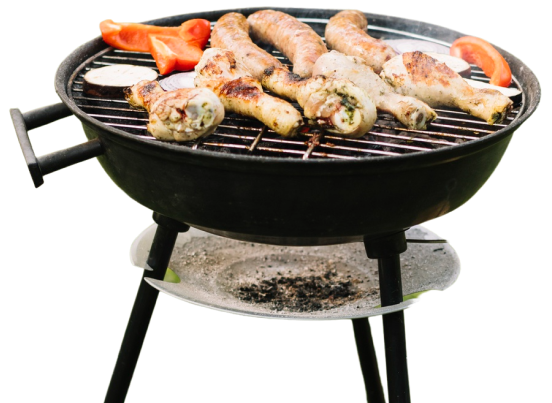
As you can probably tell from the name, grilling with indirect heat is the opposite to direct heat grilling.
This method involves placing your food away from or to the side of the heat source, often in an oven or an indirect heat smoker, thereby cooking at a slower rate but more evenly throughout.
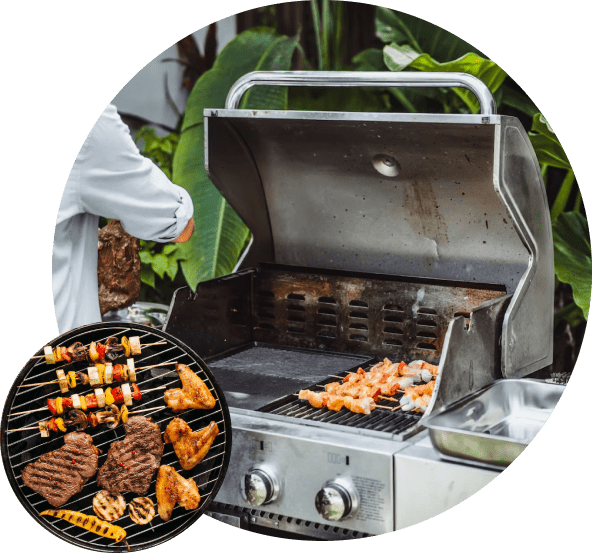
So, what actually is the indirect heat on a grill? The indirect heat comes from an adjacent heat source and creates a more consistent temperature, cooking the food without burning or charring it and locking in more moisture to keep it tender and succulent. It’s best suited to larger cuts of meat that require slow cooking, such as chicken, roasts, and ribs.
To set up your grill for indirect heat, place your food away from the heat source and close your grill.
This creates an oven-like environment and allows the heat to circulate completely around the food. The process takes longer, but it’s worth it for the juicy end results.
Using a Smoker for Indirect Grilling
It’s not uncommon to use a bbq smoker for indirect grilling. In fact, it’s many people’s preferred appliance. Smokers often burn wood or charcoal as the heat source, which creates a slow grilling process that infuses the food with a wonderful smoky flavor. The temperature can be changed by adjusting the airflow or by adding more fuel.
Large cuts of meat work particularly well in smokers, since they require longer cooking times and benefit massively from the smoky supplement.
Using indirect heat with a smoker produces tender and juicy meats perfect for below foods
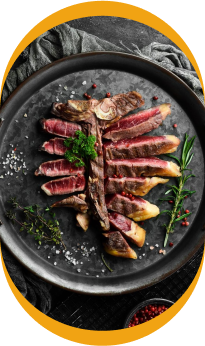
Briskets
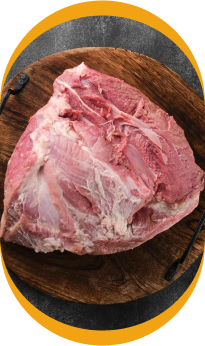
Pork
Shoulders
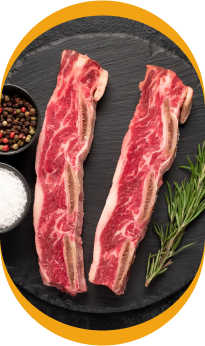
Ribs
Best Practices for Indirect Heat Grilling
Indirect heat grilling can be a little more complicated than direct heat grilling. Most people just use direct heat because it’s quick and easy to get going with little maintenance required. Larger cuts of meat are usually sent to the oven or done in a slow cooker.
But grilling with indirect heat is the only way to properly get that delicious smoky flavor of top-quality restaurants.
With that in mind, it’s worth learning how best to prepare your grill and food to take full advantage of the indirect heat method.
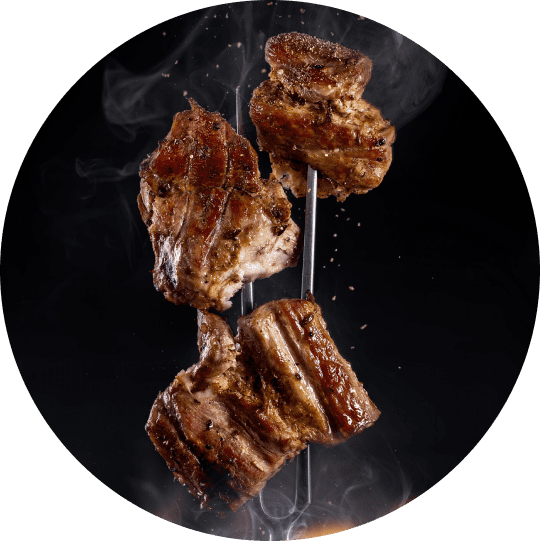
Here are a few simple things to remember before, during, and after you fire up your grill:
Best Foods for Indirect Heat Grilling
Even though direct heat is more often used for quick and easy barbecues, there are plenty of foods that are much better suited to indirect heat grilling. Thicker meats and tougher vegetables are ideal for indirect heat grilling, since a longer cooking process benefits them and draws out more of their flavors.
As a general rule, thicker meats and larger vegetables should be grilled using indirect heat.
Here’s a list of some of the best foods for indirect heat grilling
Whole chickens
An oven is fine for cooking whole chickens, but grilling chicken with indirect heat cooks it so much better.
Unlike an oven, a grill doesn’t dry the meat out and keeps it succulent and juicy, while adding a nice smoky flavor to it.
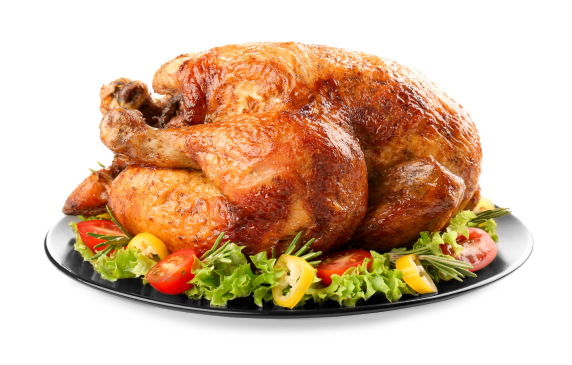
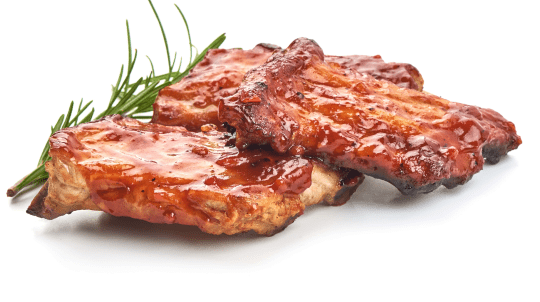
Ribs
Racks of ribs benefit from the slow process that indirect heat grilling involves, as the meat will become tenderized.
This means that when you serve it up, it’ll fall off the bone – just like you get at top restaurants.
Pork shoulder
This type of meat and similar foods (like Boston butt) also benefit from the tenderness that indirect heat brings. Since they’re bigger cuts of meat, a slower cooking process is better.
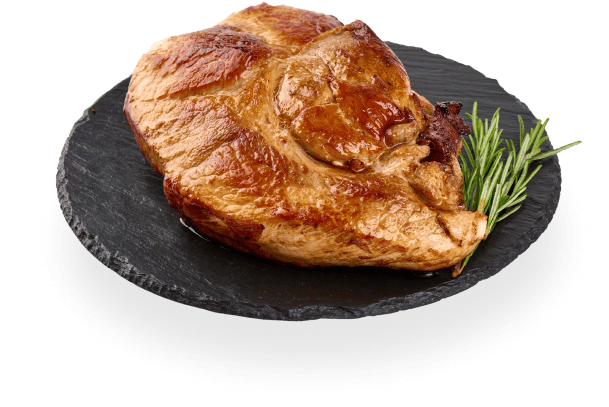
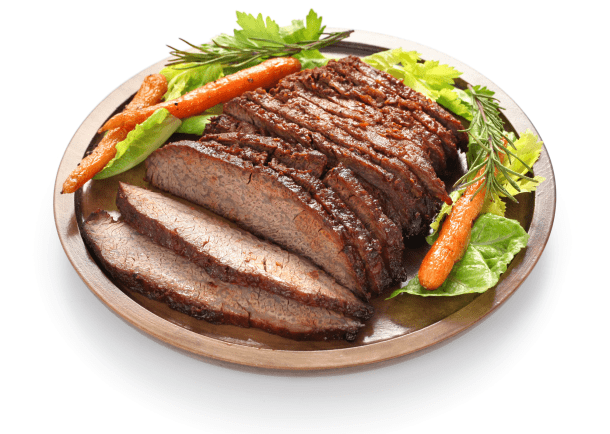
Brisket
Similarly, brisket is a bigger meat item and needs a long time to cook. This makes it perfect for indirect heat, since it can properly cook throughout.
Meatloaf
Just like brisket, meatloaf benefits from the slow cooking process of indirect heat grilling.
It’ll get a crispy exterior while the interior stays moist and delicious. What’s more, there’ll be a sweet, smoky flavor to the meat.
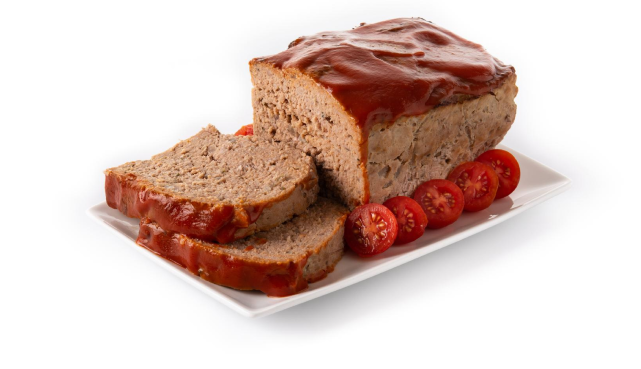

Pizza
Even pizza can be cooked using indirect heat grilling! It’ll make the crust crispy while the toppings remain moist.
For more information on how to grill pizza, check out our comprehensive guide using the link.
Vegetables
Potatoes, corn, and onions all benefit from indirect heat grilling, since exposure to direct heat will likely burn them.
The slower cooking process of indirect heat, however, keeps them tender and cooks them all the way through without charring their exteriors.
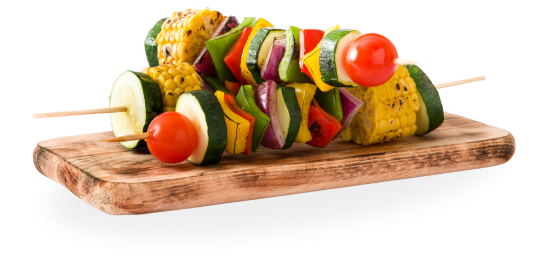
When to Use Direct Vs Indirect Heat Grilling
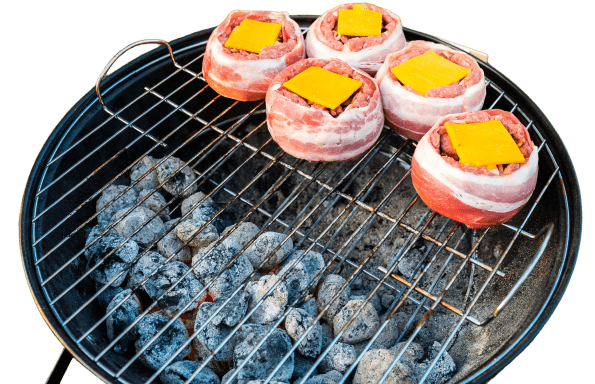
There are a number of reasons for choosing direct heat grilling over indirect heat grilling, and vice versa. It all depends on the food, how much time you have, and how you want your food cooked.
For quick and easy results, use direct heat. If you have a lot of time on your hands, however, using indirect heat can be much more worthwhile.
Often, you can use either direct or indirect heat to grill your food – it’s just down to personal preference. That said, there are certain times where it’s best to choose one over the other.
Here are some factors to consider when deciding between direct and indirect heat grilling:
Adjusting for Different Types of Grills
Different types of grill require different adjustments to ensure you’re applying the desired type of heat. Not all grills are readily adapted to both direct and indirect heat, but there are some alterations you can make to ensure you achieve the desired cooking effect.
Below, you’ll find information on how to create both direct and indirect heat for different grill types:
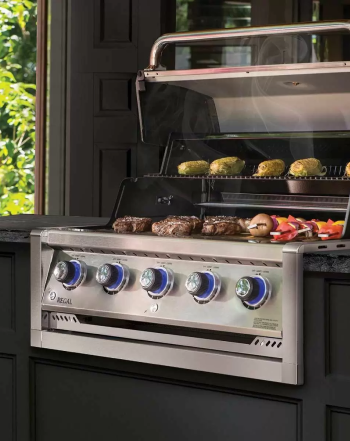
Gas grills are mainly designed for direct heat grilling, but can also be adapted to indirect heat by turning one burner on and placing the food on the unlit burner’s side. Use the knobs on the outside to select a suitable temperature.
With a gas grill, it’s important to take good care of your appliance and regularly clean the inside. Keep the lid closed and the food on the grates, turning occasionally. For best results, place large meat items in a heavy-duty foil tray to keep the juices from dripping down. These juices can also be used to make sauces or gravy.

Charcoal grills are ideal for avid grillers, since they’re well adapted to both direct and indirect heat. Cooking your food quickly with direct heat is self-explanatory, but there are a number of different methods you can use to slow cook your food with indirect heat.
Setting up a two or three-zone grill is one way to use indirect heat with a charcoal grill. By using one or two zones for heat sources and another for your food, you’ll get a lovely tender cook throughout. You could also place your charcoal in a ring around your food for the “ring of fire” method, or go one step further and add a spit through the middle to act as a kind of rotisserie.
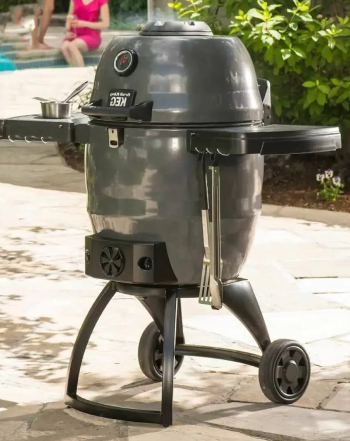
To cook with direct heat using a kamado grill, simply light the charcoal and place your food over it when it has reached the desired temperature. For indirect heat grilling, place a heat deflector (also called a plate setter) on the grill grates to create a barrier between the heat source and the food.

Pellet grills are designed for indirect heat cooking, but can also be adjusted to create a direct heat setup.
Using the grill’s sear function and placing an iron skillet on the grates are both great methods for setting up direct heat grilling. Make sure you adjust the temperature to suit the desired grilling method.
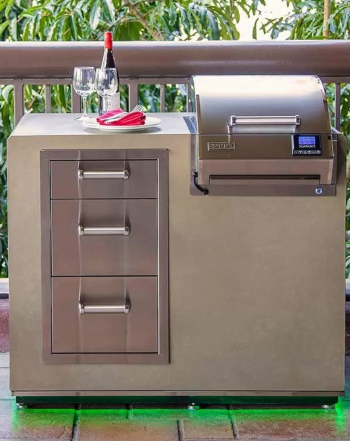
Conversely, electric grills are typically designed to direct heat grilling. However, they can be adapted to indirect heat by placing the food on a raised cooking rack and using a drip pan to catch any juices. Make sure to adjust the temperature to a suitable heat and take care to not burn your food.
Can’t Decide? Try Combo Cooking!
Sometimes, it’s best to use both methods! For instance, let’s say you want to grill a thick steak or slow cook sausages like bratwurst. An indirect heating method cooks them better, but it doesn’t leave that golden brown finish to the food. In this case, why not use both indirect and direct heat?
Give your meat a bit of a sear over direct heat, before transferring it to the other end of the grill and cooking it over indirect heat. Alternatively, get your meat nice and slow cooked all the way through using indirect heat, then blast it with direct heat at the end to give it a crispy finish. Experiment with different heating methods to find what works best.
Safety Tips for Direct and Indirect Heat Grilling

Grilling is many things – rewarding, satisfying, enjoyable – but it’s also hazardous. If done incorrectly or with a disregard for safety, you can end up seriously injuring yourself or someone else. As such, it’s vital to remember a few safety tips when grilling with direct or indirect heat.
Direct Heat Grilling Safety Tips
Direct heat grilling can be quite dangerous, since it uses very high temperatures.
To ensure your safety when you grill and keep the whole experience hassle-free, follow these protocols:
Protocols for direct heat grilling safety
Indirect Heat Grilling Safety Tips
Similarly, there are several safety protocols you must follow when using indirect heat. Even though it requires less attention and less temperature than direct heat, it’s still exceptionally dangerous if managed incorrectly.
With that in mind, follow these guidelines to keep your grilling sessions cool and composed:
Protocols for indirect heat grilling safety
General Grilling Safety Tips
On top of the safety tips mentioned above, there are some general rules you must follow to keep you and everyone around you from harm. Most of it is just common sense, but when you’re all caught up in grilling it’s easy to forget even the most basic safety protocol. When you decide to grill, always make sure to:
Troubleshooting for Direct and Indirect Heat Grilling
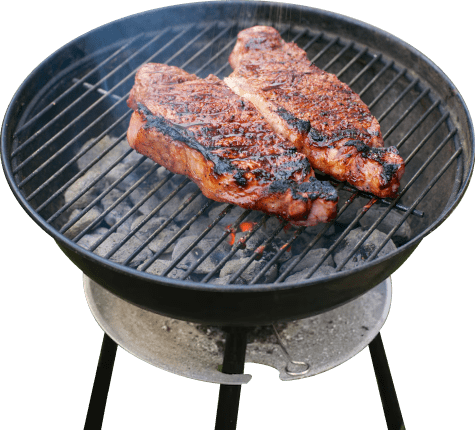
When grilling, you may encounter things that you weren’t necessarily expecting. Sometimes, your grill can “act up” in a way that seems potentially hazardous, or your food doesn’t quite cook how you expected it to. There’s always a reason for these things, some of which can be found below. If something unexpected happens that you don’t know how to control, make sure you stay calm and switch off your grill.
Direct Heat Grilling Troubleshooting
Unevenly cooked food: This can sometimes happen if the direct heat is not distributed evenly across the grill. Since the high heat will cook the closest part faster, it’s important to regularly flip and turn your food so it cooks evenly. If you don’t you’ll be left with one side overcooked and the other undercooked. Space out your food items on the grates and make sure to properly preheat your grill.
Unevenly cooked food
This can sometimes happen if the direct heat is not distributed evenly across the grill. Since the high heat will cook the closest part faster, it’s important to regularly flip and turn your food so it cooks evenly. If you don’t you’ll be left with one side overcooked and the other undercooked. Space out your food items on the grates and make sure to properly preheat your grill.
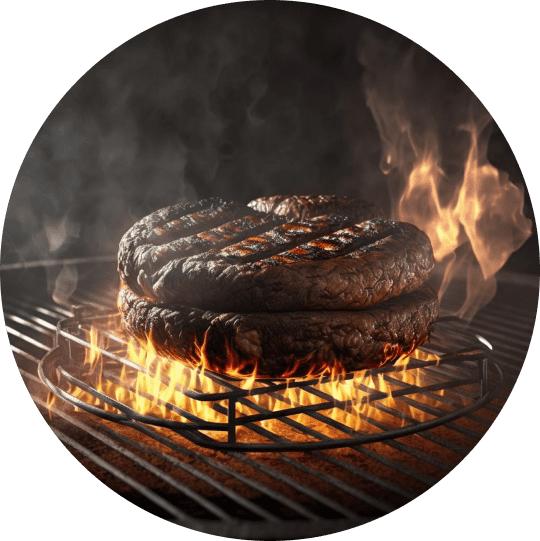
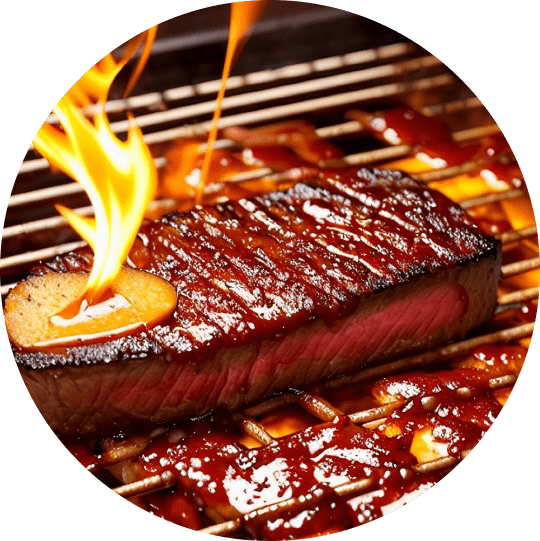
Flare-ups
If you’re experiencing a lot of flare-ups, check the state of your grill. These occur when fat or juices drip into the flames, which can lead to sudden increase in temperatures and burn your food. To prevent this, make sure to regularly clean your grill and use a drip pan to catch any liquids that drip down. If flare-ups persist, move the food to a cooler part of the grill.
Indirect Heat Grilling Troubleshooting
Unevenly cooked food
As with direct heat, food won’t cook evenly if the heat is not distributed evenly around the grill. It’s also possible that your food is too thick, or you haven’t rotated it enough. Even though your food doesn’t need as much attention with indirect heat grilling, it’s still important to periodically rotate your food.
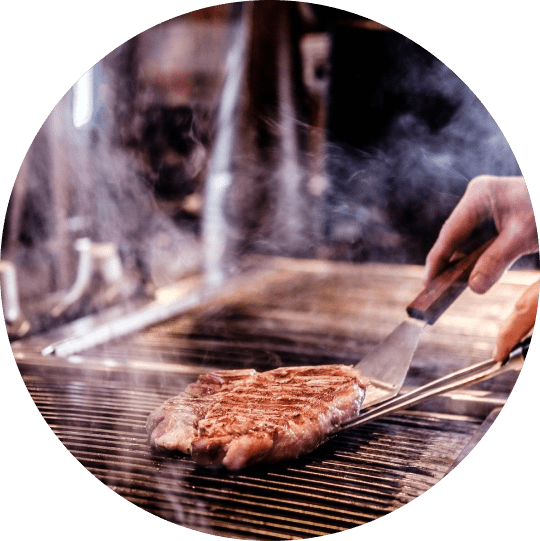
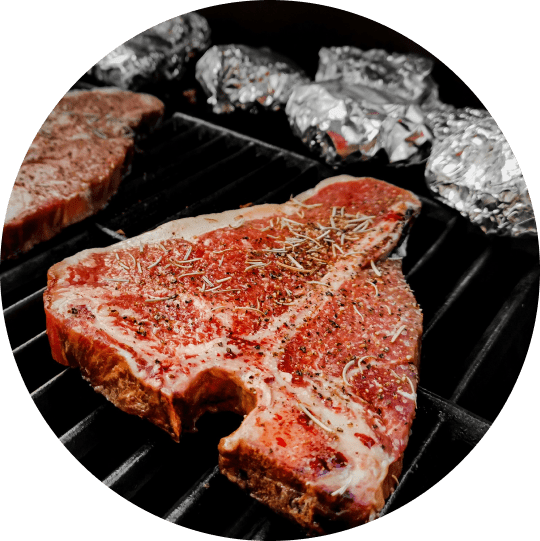
Dry or tough meat
Indirect heat grilling is perfect for keeping moisture locked into the meat, making it tender and juicy. If it comes out too dry, it’s likely that you’ve cooked it for too long or at too high a temperature. Use a meat thermometer to monitor the temperature of your grill and food, or rub a marinade over the meat to add flavor and moisture.
Now You Can Grill Like a Pro!

To sum up, then, direct heat is when a heat source is applied directly to the food and is ideal for thin meats and smaller vegetables. It cooks quickly and gives your food a lovely charred finish. Indirect heat, on the other hand, is where your food is cooked away from the heat source via a number of different methods. It’s best suited to thicker meats and produces a slow-cooked, tenderized result.
Understanding the difference between direct and indirect heat is what really sets professional grillers apart from the rest. By knowing exactly what foods need what kind of prep and how to cook them, you can impress your whole neighborhood with your grilling skills. Never underestimate the importance of proper research before cooking, as it can make all the difference to how your food turns out.
What advantages and disadvantages does each method of grilling cooking with direct and indirect heat have?
The main advantage of grilling with direct heat is the fact that this method can cook food quickly, allowing for efficient and easy outdoor meals. The disadvantage of grilling with the direct heat method is that there is the potential to burn your food if you’re not careful.
Grilling with the indirect heat method has the advantage of being a gentler style of cooking, which can prevent burning and allows for food to be cooked evenly. The disadvantage of this method is that it takes longer than direct heat grilling.
What are the steps for preparing a grill for direct heat?
The steps for preparing a grill for direct heat are:
- Preheat the grill by setting all of the burners on high (or lighting charcoal briquettes).
- Once the grill is preheated, turn down one side to medium-high and the other side to low.
- Place your food over direct heat and sear both sides until cooked to the desired doneness.
- Move the food from direct heat to indirect heat if needed.
- Allow food to cook thoroughly before removing it from the grill.
- Turn off all burners when finished cooking or cover with a lid if using charcoal briquettes.
What are the steps for preparing a grill for indirect heat?
The steps for preparing a grill for indirect heat are:
- Preheat the grill with burners on high for 10-15 minutes;
- Turn off one or two of the burners, depending on the size of your food, to create an indirect cooking area;
- Place your food in the indirect cooking area and close the lid;
- Reduce heat from any lit burners to low or medium-low and let cook until thoroughly done.
How do I know when my food is done when grilling with direct heat?
When Grilling with direct heat you can tell that your food is done by checking for charring and using the thermometer at the thickest part of the meat or vegetable to ensure it has reached the desired internal temperature. To determine whether something is charred enough, try to press lightly on the outside of it with tongs or a spatula. If it feels firm, then it is most likely ready.
How do I know when my food is done when grilling with indirect heat?
To ensure your food is cooked properly using indirect heat while grilling, make use of a cooking thermometer to take the internal temperature. Position the thermometer in the thickest part of the meat or vegetable, and verify the temperature to determine if the food is cooked as desired. Once you’ve achieved the recommended temperature, you may remove your food from the grill.
Check out this guide for more information on grilling and recommended temperatures: https://www.fsis.usda.gov/food-safety/safe-food-handling-and-preparation/food-safety-basics/grilling-food-safely
What are some of the best direct heat grilling recipes?
Direct heat grilling is a versatile and delicious way to utilize your grill. Try making hamburgers, steak, chicken, kabobs, fish, and grilled vegetables like bell peppers and mushrooms. Get creative by experimenting with different marinades for meats, spice blends for veggies, and unique sauces for everything! Enjoy your grilled creations!
What are some of the best indirect heat grilling recipes?
Indirect heat grilling recipes like beer can chicken, whole grilled fish, and smoked pork ribs are some of the best options. These recipes require placing food away from direct heat and slowly cooking it using charcoal or wood chips for indirect heat. By doing this, you can achieve even heating without burning or charring the food, resulting in delicious and tender dishes every time.
What are some common mistakes people make when grilling with direct heat?
To grill with direct heat properly, it’s important to avoid some common mistakes such as, preheating the grill in-appropriately, leaving the lid open longer than necessary to regulate temperature and prevent flare-ups, neglecting to clean it before and after every use, overcrowding the grate, and relying on high cooking temperatures. Moreover, it’s crucial to move food around on the grill to prevent burning or uneven cooking and use a meat thermometer to ensure that meats are neither undercooked nor overcooked.
What are some common mistakes people make when grilling with indirect heat?
To achieve successful grilling with indirect heat, it’s crucial to preheat the grill for a minimum of fifteen minutes and/or wait for the coals to turn ash-gray before placing the food. One should keep an adequate distance between the food and heat source and adjust the vents to control temperature. Also, avoid overcrowding or covering the cooking grate during indirect grilling to prevent uneven heating of food.
What are some of the best foods to grill using indirect heat?
Some of the best foods to grill using indirect heat are chicken, pork ribs, fish, and vegetables. Cooking chicken over slow direct heat is great because it crisps up the skin and maintains the meat’s moisture. Pork ribs can be cooked for extended periods without worrying about burning them. Cooking fish, like salmon or cod, can be improved by using indirect heat in a cooler zone. Vegetables like onions, bell peppers, mushrooms, zucchini and eggplant are ideal for grilling over indirect heat since they don’t require long cooking times or very high temperatures to become tender and achieve that classic grilled flavor. Also, try grilling fruits such as peaches or pineapple which get lovely caramelized edges when cooked on indirect heat!
